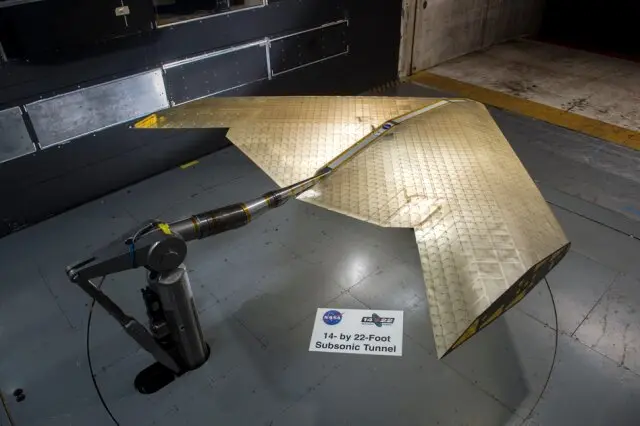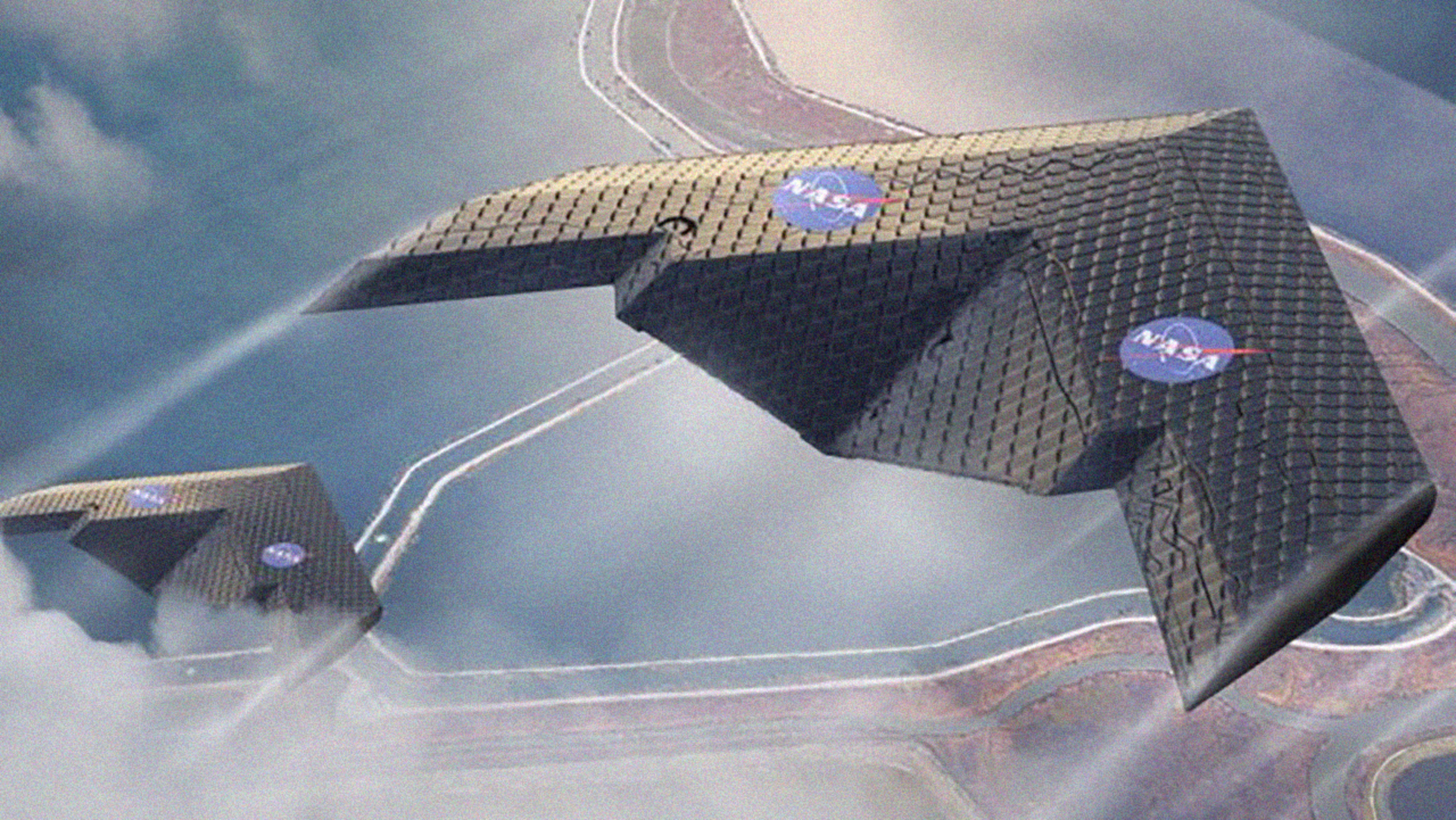A clever new wing design could make both air travel, plane maintenance, and plane production more efficient–and that could be good news for everyone.
Researchers from NASA and MIT teamed up to rethink plane wings and came up with the idea of assembling them from hundreds of tiny identical pieces, making them easy to maintain and repair, and even more interesting, giving them the flexibility to change shape mid-flight to better control the plane’s journey. The wing is made of an open, lightweight lattice framework of tiny triangles and empty space covered with a thin layer of polymer material, making the wing lighter and more energy-efficient. The design allows for flexibility and even shape-shifting, so the wing can change as it moves through what the researchers poetically call “the phases of a flight“–takeoff and landing, cruising, maneuvering, etc. Traditional airplane wing design is a compromise of what is optimal for each phase, but this new design means the wing could transform to be optimal for each step, making flying much more efficient.

The new design isn’t limited to air travel, though: The researchers believe it could improve wind turbines as well as help propel spacecraft and make long-lasting, easy-to-repair bridges.
Recognize your brand’s excellence by applying to this year’s Brands That Matter Awards before the early-rate deadline, May 3.
